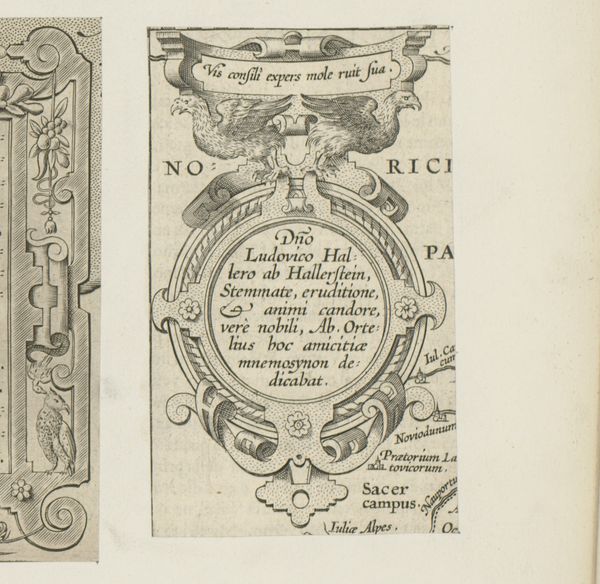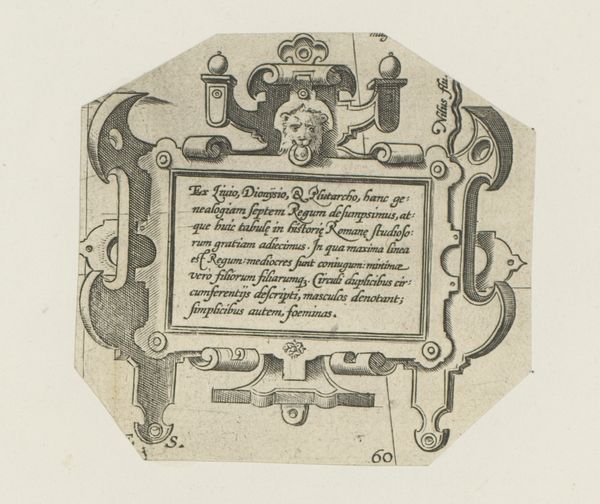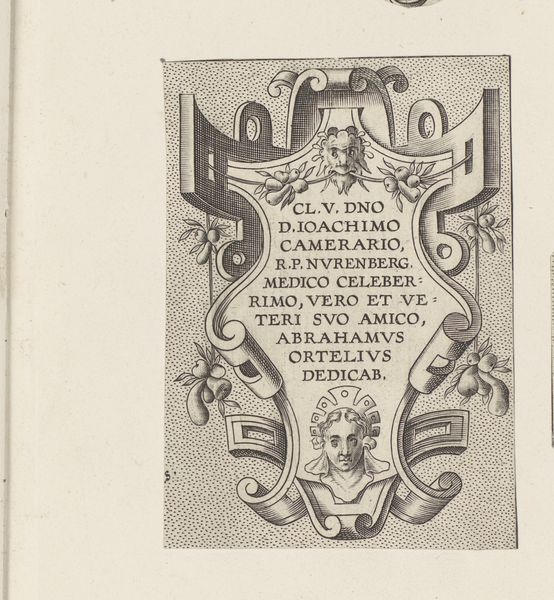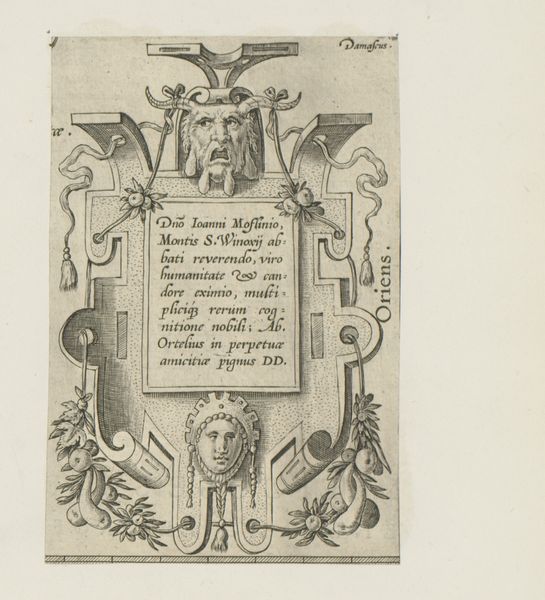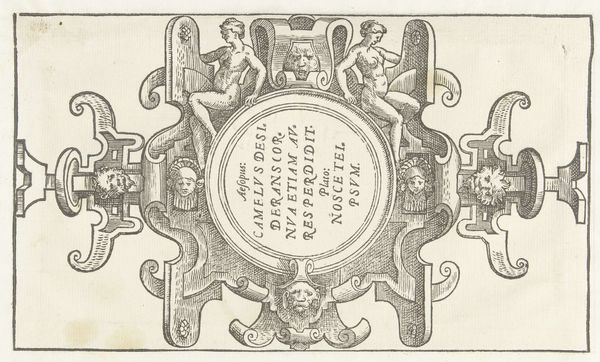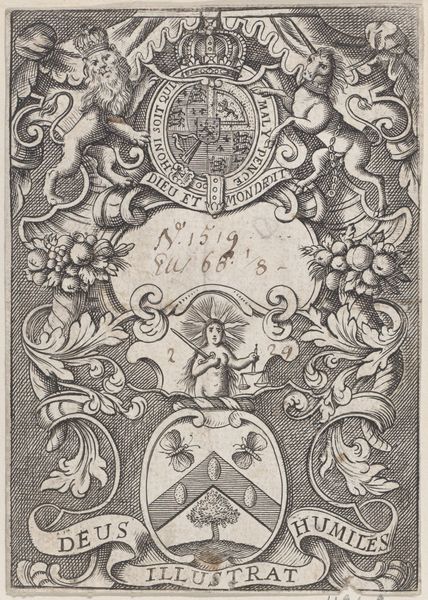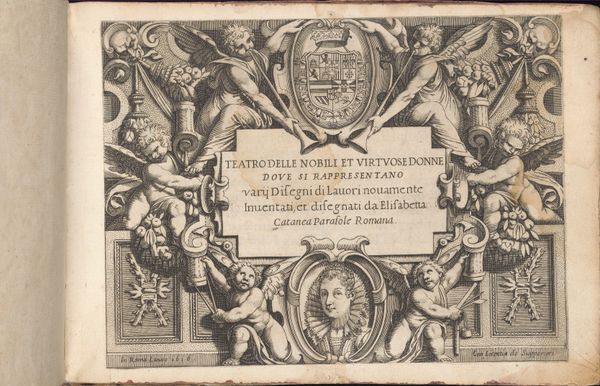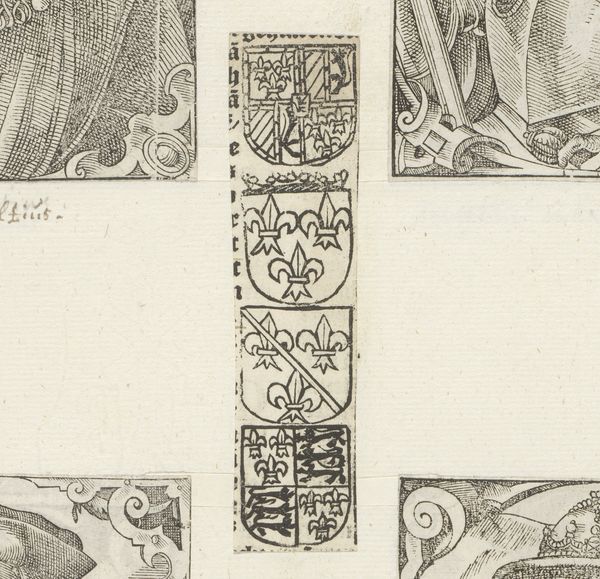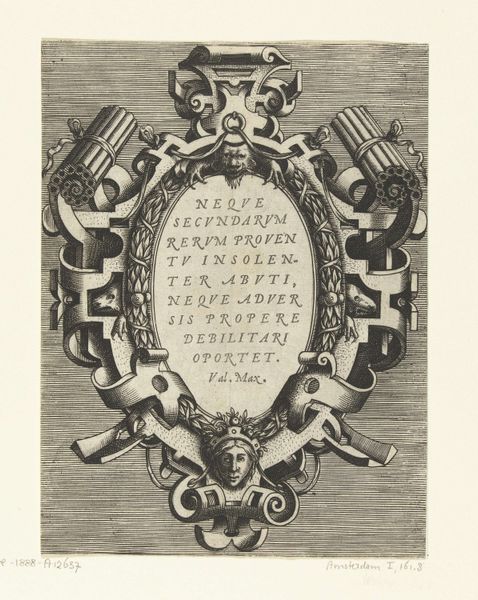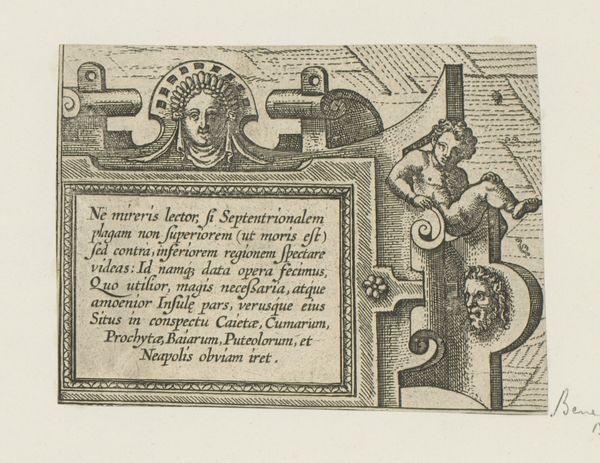
print, engraving
#
portrait
# print
#
form
#
11_renaissance
#
history-painting
#
engraving
Dimensions: height 110 mm, width 103 mm
Copyright: Rijks Museum: Open Domain
Curator: This delicate print, dated 1592, presents a triangular cartouche featuring a women's mask. While the artist is anonymous, the style bears the hallmarks of the Renaissance portraiture tradition executed via engraving. The level of detail, particularly within such a small space, is remarkable. Editor: Immediately, I’m struck by the somewhat somber tone. The grayscale and rigid lines lend it a formal quality. The symmetrical design, while typical for the era, feels very contained, almost restrictive. The text inside seems like it's trying to constrain itself within a rigid geometric design. Curator: The presence of text in Latin is highly suggestive of its function, indicating the role of print and typography as signifiers of power and prestige within elite scholarly circles. It reflects a social system wherein displays of erudition legitimized socio-economic status. In this piece we can clearly make out: "Stemmate et eruditione claro Dn. Hadriano Marselario, patricio Antwerpensi, Ab. Ortelius dedicab," Editor: Right, and placing that inscription within a frame ornamented with classical motifs—the grotesque mask at the top, the draped figure below—it all signals a deliberate attempt to connect this individual, Hadrianus Marselarius, to a lineage of cultural and intellectual authority. The mask almost acts as a commentary on gender, class, and the roles these individuals play. Curator: Precisely. The choice of such elaborate ornamentation and symbolism can be perceived as both celebratory and performative. As a dedication by Abraham Ortelius, it situates this cartouche within a network of patronage and intellectual exchange in Antwerp during the late 16th century. A location on a contemporary map as is partially revealed behind the design. Editor: The act of dedication itself is interesting. What socio-political conditions enabled such artistic endorsements? This wasn’t just about aesthetics, was it? But also creating affiliations and confirming allegiances within societal structures that largely excluded marginalized voices and identities. Curator: Indeed. Consider that the imagery deployed carries a wealth of historical meaning: referencing classical antiquity, suggesting humanist ideals, but also reinforcing structures of social privilege. The visual and textual elements work in concert to construct a narrative of social status and accomplishment for both patron and dedicatee. Editor: Ultimately, while the artwork shows a technical achievement for its time, it equally presents some questions to us about issues surrounding representation and power. It is more than just decorative design. I suppose we should continue considering such perspectives as we approach and reinterpret such work within new frameworks today. Curator: A fitting call for deeper reflection—the image certainly inspires thoughtful examination of both historical context and ongoing impact, reminding us that objects often mirror the power dynamics of their time.
Comments
No comments
Be the first to comment and join the conversation on the ultimate creative platform.
